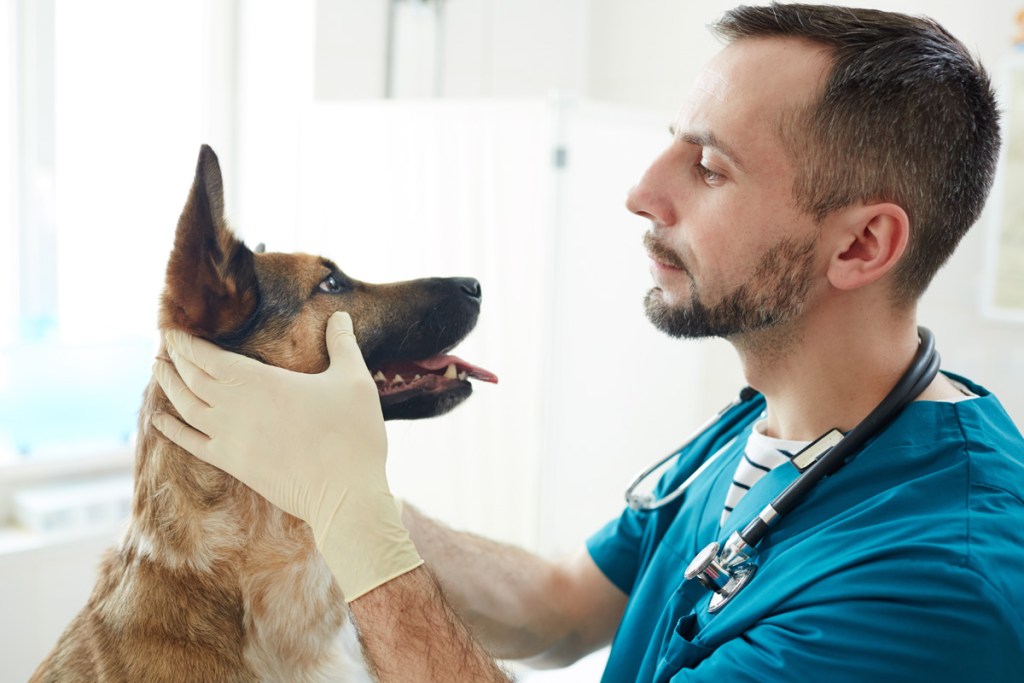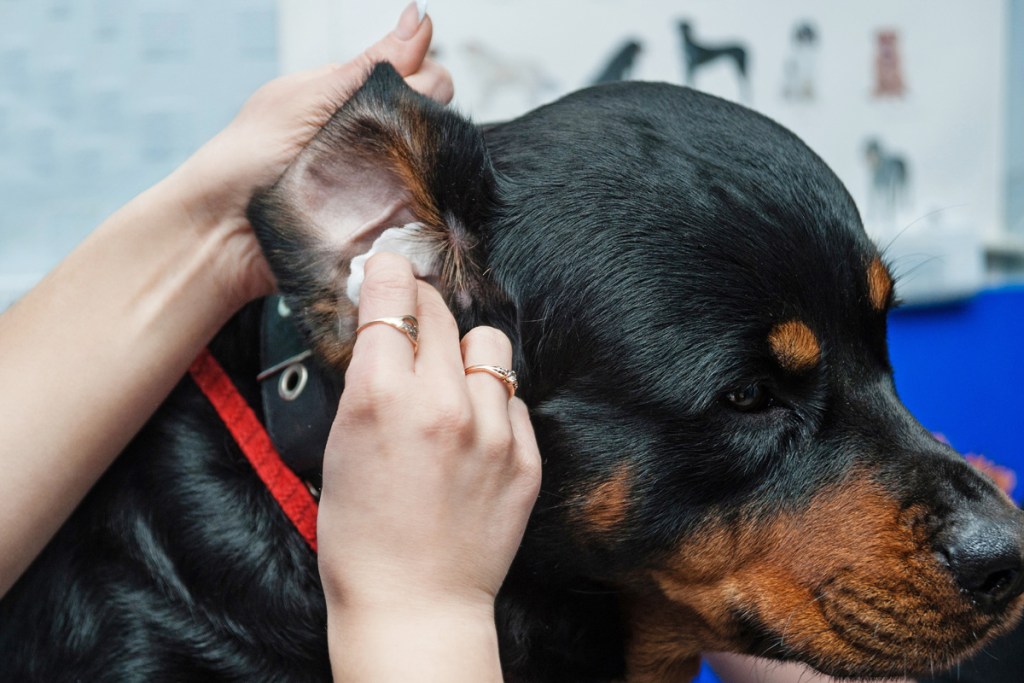Has your dog suddenly become unsteady on his feet, maybe stumbling around and looking for all the world as though he were drunk? He may be suffering from a condition known as ataxia (incoordination). Veterinary experts describe ataxia as a degenerative disease of the nervous system. Abnormal movements in a dog with this condition can occur in the legs, the head, or the torso. Depending on the cause, ataxia can come on gradually or appear suddenly. In some dogs, the symptoms may start out mild but intensify over time. This disease is always a symptom of an underlying illness or injury, so it’s important to visit a veterinarian if you notice your dog seems confused and off-balance.
There are three types of ataxia
Sensory or proprioception
This condition is linked to problems with a dog’s spinal cord. Causes could include a tumor in the spine or spinal cord or infection of the vertebrae. Typical symptoms of sensory ataxia include a loss of balance, stumbling, swaying, dragging the limbs between steps, or falling over.
Vestibular
Also known as vestibular syndrome, this form of ataxia is associated with a dog’s inner ear. Dogs suffering from this condition may have a head tilt and feel dizzy. With this form of the disease, there may be an abnormal movement of a dog’s eyes, which may drift from side to side, say veterinary experts at VCA Hospitals. Dogs suffering from vestibular ataxia will often stand with their feet wide apart in an attempt to stay upright. Depending on the severity of the condition, symptoms may also include leaning, tipping, falling, or even rolling over.

Cerebellar
This form of ataxia is caused by problems in the cerebellum, the part of the brain responsible for coordinating movement. Symptoms of dogs suffering from this condition include exaggerated leg movements and head tremors. Veterinary experts say that cerebellar ataxia in dogs is usually due to congenital defects, inflammatory diseases, or brain tumors.
How ataxia is diagnosed
To diagnose ataxia, veterinarians will conduct a thorough review of a dog’s health records and will ask when the symptoms began and possible incidents that might have preceded the condition. For example, in 2018, U.S. Food and Drug Administration officials received thousands of reports of dogs having negative reactions, including symptoms of ataxia, after using flea and tick preventatives containing drugs in the isoxazoline class. Standard tests including a blood chemical profile, a complete blood count, a urinalysis, and an electrolyte panel can also help in diagnosing ataxia, according to veterinary experts at PetMD. In addition, MRIs, CT scans, or X-rays can also help veterinarians determine which form of ataxia a dog may have.
Treatment depends on the cause
Pain management, supportive care, and making an environment safe all play a role in treating ataxia. According to Richard Walther, a veterinarian at Blue Ravin Animal Hospital in California and a medical expert for the Pawlicy Advisor company, if the ataxia is caused by an infection or inflammation, it may be treatable with medication. Supplemental nutrition to offset potential deficiencies in vitamin B, potassium, calcium, and glucose may help some dogs suffering from ataxia. In cases of severe infection or when ataxia is caused by the ingestion of toxins, dogs may have to be hospitalized. Treatments for canine ataxia caused by tumors and cancer usually involve chemotherapy, radiation therapy, and possibly surgery, according to Walther.
How to prevent ataxia
While there’s no way to ensure your dog never suffers from this neurological disease, you can take steps to help keep him healthy. For example, regularly cleaning your dog’s ears to prevent ear infections can help avoid the onset of vestibular ataxia. To avoid ataxia caused by toxicity, be sure to keep medications and other household toxins out of your dog’s reach. The Pet Poison Helpline offers a list of the top 10 kitchen toxins, and it’s surprising how many can result in ataxia if ingested by dogs. If you spend a lot of time at the shore with your dog, be sure he doesn’t ingest too much saltwater, as this can lead to ataxia. And keep your dog away from water contaminated with blue-green algae, another trigger for this disease.

According to Walther, while some dogs may not recover their lost balance or coordination following treatment for ataxia, most can lead normal lives. If your dog is recovering from treatment, it’s important to keep him safe by blocking access to any stairs or places where he could fall and injure himself. And remember, while it takes more work to care for a special-needs pet, the chances are that you’ll develop an even stronger bond with your best friend.
Editors' Recommendations
- Why does my dog have a bald patch on their tail? Here are the answers you need
- Looking for signs your dog has ticks? These telltale symptoms mean you have a flea or tick problem
- Do puppies sleep a lot? These are the perfectly normal sleeping habits of a healthy pup
- What you need to know about dogs with blue eyes
- Could it be a dog paw infection? Signs, symptoms, and treatments for these pesky, painful issues




